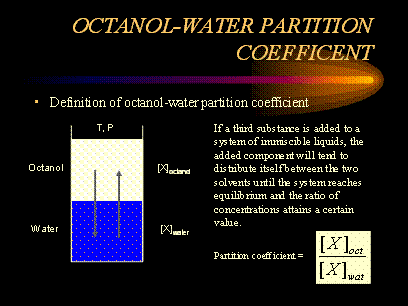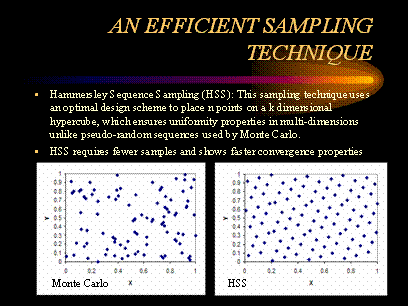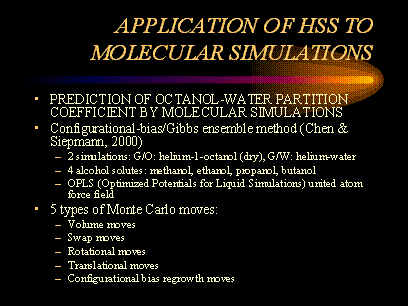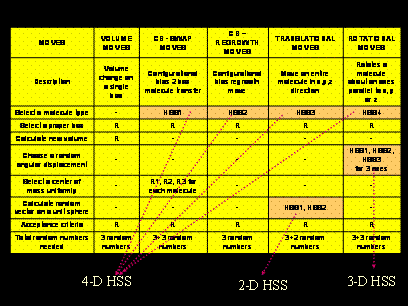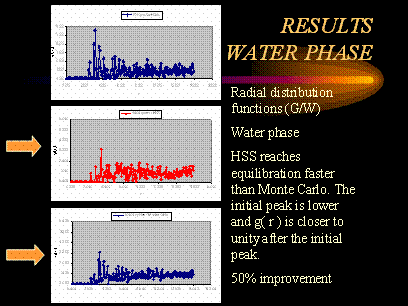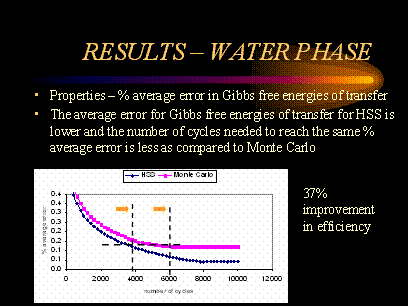Molecular Simulations for Environmental Property Predictions: An Efficient Sampling Approach
Octanol-water partition coefficient Kow is an important molecular parameter in estimating various environmental and toxicological properties of chemicals. This coefficient have been used in estimation of toxicity parameters such as LC50 (lethal concentration that will kill a statistical 50% of a test population) and LD50 (lethal dose that will kill a statistical 50% of a test population). It has also been found that the bio-concentration factor (BCF), describing the bioaccumulation of chemicals in an organism has a strong dependence on Kow. In addition, octanol-water partition coefficients provide a basis to a large amount of quantitative-structure activity relationships (QSARs), which have been used to correlate or predict solute properties in biophases (membranes, fat tissue, body fluids).
An efficient sampling technique based on a quasi-random sequence of points that perform significantly better than conventional Monte Carlo sampling is used to predict octanol-water partition coefficients. This technique is called Hammersley Sequence Sampling (HSS), which uses a low-discrepancy sequence of points with deterministic error bounds and multidimensional uniformity properties. The k-dimensional uniformity properties of HSS have been exploited in order to reduce the number of cycles required to reach equilibration and to obtain more accurate property predictions. Configurational-bias Gibbs ensemble technique was used to predict octanol-water partition coefficients from Gibbs free energies of transfer. Preliminary results using HSS and conventional Monte Carlo sampling (pseudo-random numbers) indicate that the system reaches equilibration faster, which was confirmed by plotting radial distribution functions. Furthermore, the Gibbs free energies of transfer predicted are closer to experimental data when HSS was used.
